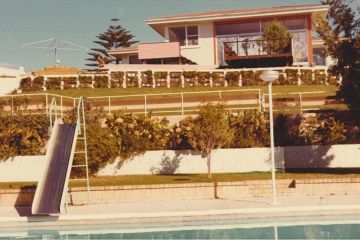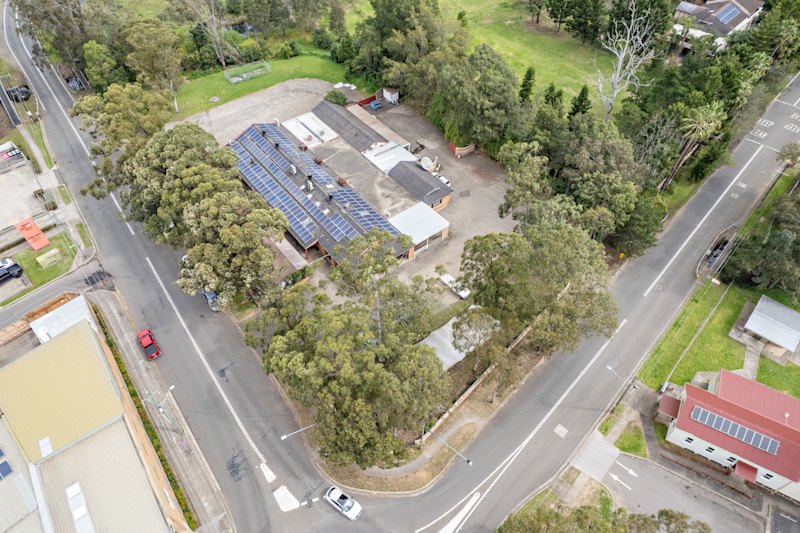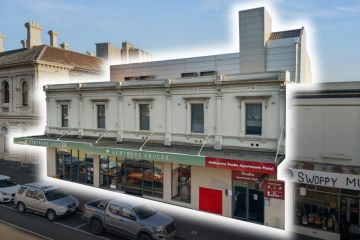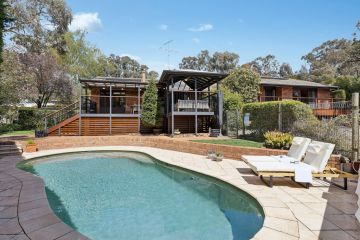Melbourne skyline: Landmark buildings designed by internationally renowned architects
In plain sight, and mostly concentrated in Melbourne’s CBD, are buildings whose creative provenance attaches to some of the greatest modern international architects.
As the city’s skyline goes up, the prominence of buildings such as Collins Place, Melbourne Central, the AMP Tower, the St James Building on William Street and the curvaceous 1 Spring Street, is challenged and their dominance is receding.
As they gain vintage too, their design edginess becomes less impactful. But that doesn’t lessen the fact that we have a portfolio of works by of some of the architectural giants of their age. And happily, some are heritage listed.

Until the mid-’80s, the twin buildings at Collins Place were the city’s highest building. Photo: Ken Irwin
Collins Place (corner Exhibition and Collins streets)
Essentially Melbourne’s twin towers, the two buildings of 46 and 50 levels that are skewed away from the corner, have an inviting and expansive glass-roofed shopping atrium in between and until 1986 were the city’s highest buildings.
They are a 1981 completion by New York’s I.M.Pei and Partners, and although Professor Philip Goad, Chair of Architecture at Melbourne University points out that the chief author of the project was Pei partner Harry Cobb, it doesn’t diminish the association to the now 100 year old Chinese-American who won a Pritzker Prize and among many fantastic buildings, designed the glass pyramid at Paris’s Louvre Museum, Japan’s Miho Museum and the Museum of Islamic Art in Doha.

Shell House. Photo: Erin Jonasson
1 Spring Street (corner Flinders and Spring streets)
Another top of the town building and another that the late internationalist Harry Seidler had to argue to have set back from the corner.
Based on the idea that the 24 level building was headquarters for the Shell petroleum company, Seidler referenced the curves of a shell in the gateway building’s still pleasing form.
Associated with some of Australia’s most beautiful structures, including Australia Square in Sydney, Seidler spent over half a century in Australia and won an extraordinary five Sulman Medals – one of Australia’s highest architecture awards.
What the Austrian-born Seidler shipped into this country were ideas gained during an American education that saw him taught or influenced by Bauhaus or Internationalist originals such as Walter Gropius, Marcel Bauer, Oscar Niemeyer and Alvar Alto.

Photo: Pam Morris
AMP Tower and St James Building (corner Bourke and William streets)
Completed in 1969 as an L-shaped bracketing building with polished granite-faced window openings slanted at a 45 degree angle, and a central 26 storey office tower, this attractive complex and another with pedestrian plaza, is the work of San Francisco’s 80-year-old iconic building makers, Skidmore Owings and Merrill, and chiefly, Professor Goad points out, lead architect Chuck Bassett.
Goad also mentions as significant the twisting rusted steel forecourt sculpture Awakening by the late Melbourne/American Clement Meadmore.

Getting to the point: Melbourne Central’s dome. Photo: Joe Armao
Melbourne Central (Swanston, Lonsdale, Elizabeth streets)
A huge, all-encompassing structure that bought alive a commercial backwater of Melbourne when completed in 1991, the transport, office tower, shopping and eating hub was the work of the late Japanese master, Kisho Kurokawa, who Professor Goad rightly calls “a super big name in Japanese architecture”.
The founder of a sublime school of modern design called “Metabolism”, Kurokawa’s sweeping international portfolio includes museums like The National Art Centre in Tokyo, stations, hotels, and buildings such as Paris’s Pacific Tower. He called Melbourne Central’s form “crystal cut”.

Melbourne Central’s shot factory tower and glass cone. Photo: Joe Armao
For the average pedestrian, Melbourne Central’s most remarkable feature is the space-age glass cone that covers the historic shot tower.

Inside is where the magic is. Photo: Eddie Jim
101 Collins Street
You have to enter this 1991 building to experience the transporting space of the wide columned foyer that came off the drawing board of John Burgee, of the hugely important US post modernist partnership Johnson and Burgee, founded by the late Philip Johnson. The rest of the 57 storey building is by local firm, Denton Corker and Marshall (DCM), which is now an international force in its own right.
Johnson, another Pritzker recipient, was famous not only for coining the term “International School” but among many revolutionary buildings, for his own Connecticut home, “Glass House”.
There are several other greats on the list: Philippe Starck, the Frenchman called the most famous designer in the world, was responsible for the interior design on The Wharton building within the Tribeca complex which was part of the 2005 residential conversion of the former Victoria Brewery on Victoria Street, East Melbourne.
Going back to the beginnings of Melbourne, Robert Russell, who in 1836 had strong claims to having laid out the original grid of the CBD’s streets – and thus the most enduring of Melbourne’s built artefacts, had trained in London with the influential John Nash, who among many London buildings designed the state rooms of Buckingham Palace.
The architect of New Delhi and famous for his “natural or garden style” 19th and early 20th century country houses in Britain, Edwin Lutyens was responsible for the design of retailer Sidney Myer’s mausoleum in Box Hill Cemetery.
And although we know of his most famous buildings and streetscapes — most notably Canberra, The Capitol Theatre and Newman College, and what remains of the 250 houses he and his wife Marion Mahoney designed during the Burley Griffin’s Australian domicile from 1915-1935 — in Little Bourke Street is a small and easily overlooked building that Walter Burley Griffin, the one-time associate of Frank Lloyd Wright’s Prairie School, remodelled in 1921.
109 Little Bourke Street was the Kuomintang or Chinese Nationalist Club’s building and its facade still portrays, albeit in small scale, Griffin’s feel for crystalline geometries that are writ so much larger in the Capitol Theatre’s auditorium.
We recommend
States
Capital Cities
Capital Cities - Rentals
Popular Areas
Allhomes
More






